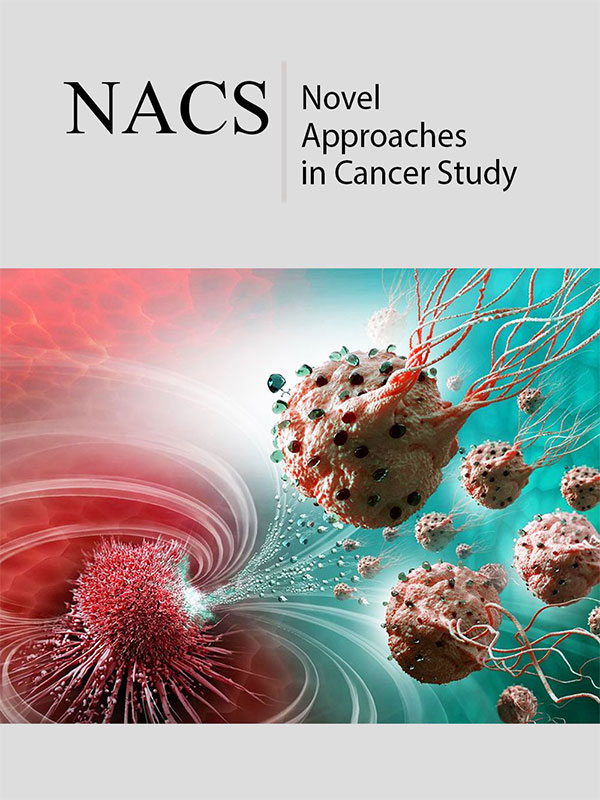- Submissions

Abstract
Novel Approaches in Cancer Study
Lactylation in Breast Cancer: Molecular Mechanisms, Pathophysiological Roles, and Therapeutic Implications
-
Open or CloseDengwang Chen1,2#, Xinyue Jiang2#, Dongmei Li3*, Zudi Meng4* and Yingcong Ren1*
1Department of Geriatric Medicine, Chengdu Medical College, China
2Department of Histology and Embryology, Zunyi Medical University, China
3Department of Clinical Laboratory, Guangyuan Central Hospital, China
4Department of Blood Transfusion, The First People’s Hospital of Guiyang, China
#These authors contributed equally to this work.
*Corresponding author:Yingcong Ren, Department of Geriatric Medicine, Chengdu Medical College, Chengdu 610500, China, Zudi Meng, Department of Blood Transfusion, The First People’s Hospital of Guiyang, Guiyang 550002, China and Dongmei Li, Department of Clinical Laboratory, Guangyuan Central Hospital, Guangyuan 628000, China
Submission: September 22, 2025;Published: October 01, 2025

ISSN:2637-773XVolume8 Issue 2
Abstract
Lactylation, a novel metabolite-derived post-translational modification, has emerged as a pivotal mechanism bridging dysregulated metabolism and oncogenic signaling in breast cancer. This review comprehensively synthesizes current knowledge on the molecular mechanisms, pathophysiological roles, and therapeutic implications of lactylation in breast cancer. Driven by the glycolytic tumor microenvironment, lactate serves as a substrate for lactylation on both histone and non-histone proteins. Histone lactylation alters chromatin landscape to promote the expression of genes critical for proliferation, metastasis, and immunosuppression. Furthermore, lactylation of key non-histone proteins, such as metabolic enzymes and signaling molecules, rewires cellular pathways to enhance tumorigenesis. Accumulating evidence demonstrates that lactylation contributes significantly to breast cancer progression, drug resistance and immune evasion, underscoring its role as an active driver rather than a passive consequence of tumor metabolism. Targeting the lactylation pathway therefore represents a promising therapeutic strategy. This review consolidates the understanding of lactylation’s function in breast cancer pathobiology, highlights its potential as a prognostic biomarker and therapeutic target, and discusses future research directions for clinical translation. Ultimately, deciphering the lactylation code opens new avenues for overcoming therapy resistance and improving patient outcomes in breast cancer.
Keywords:Lactylation; Breast cancer; Warburg effect; Tumor microenvironment; Therapeutic target
 a Creative Commons Attribution 4.0 International License. Based on a work at www.crimsonpublishers.com.
Best viewed in
a Creative Commons Attribution 4.0 International License. Based on a work at www.crimsonpublishers.com.
Best viewed in 







.jpg)






























 Editorial Board Registrations
Editorial Board Registrations Submit your Article
Submit your Article Refer a Friend
Refer a Friend Advertise With Us
Advertise With Us
.jpg)






.jpg)














.bmp)
.jpg)
.png)
.jpg)










.jpg)






.png)

.png)



.png)






